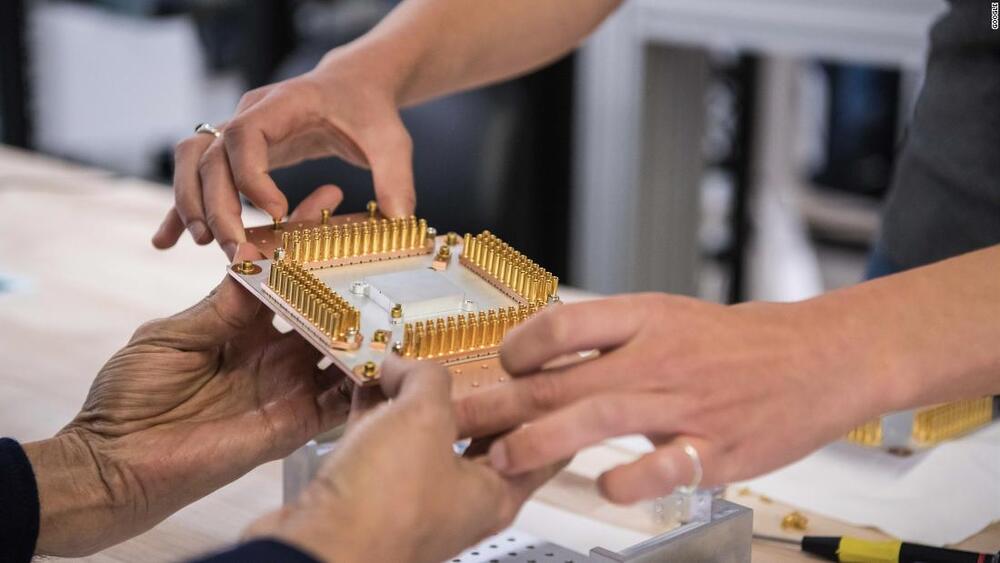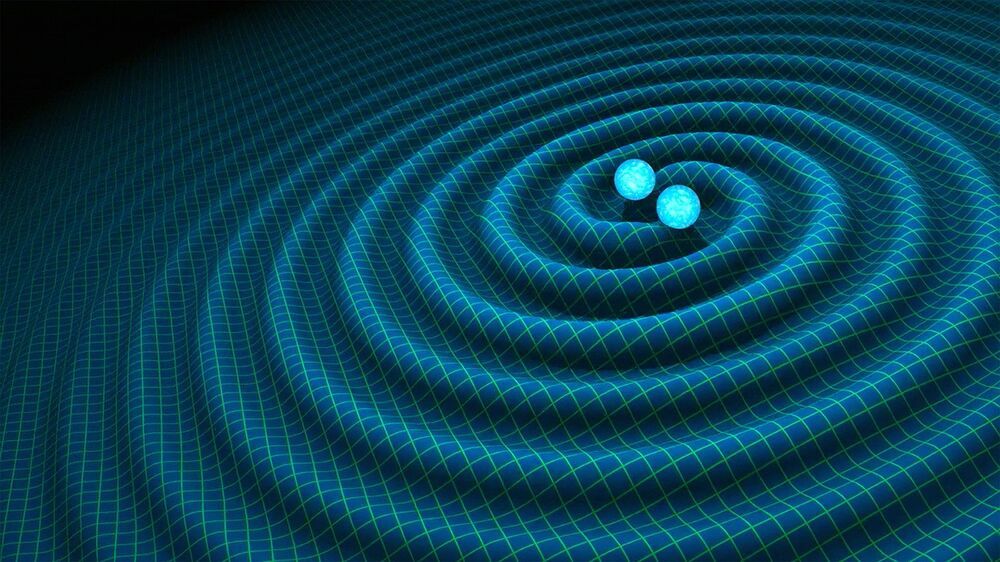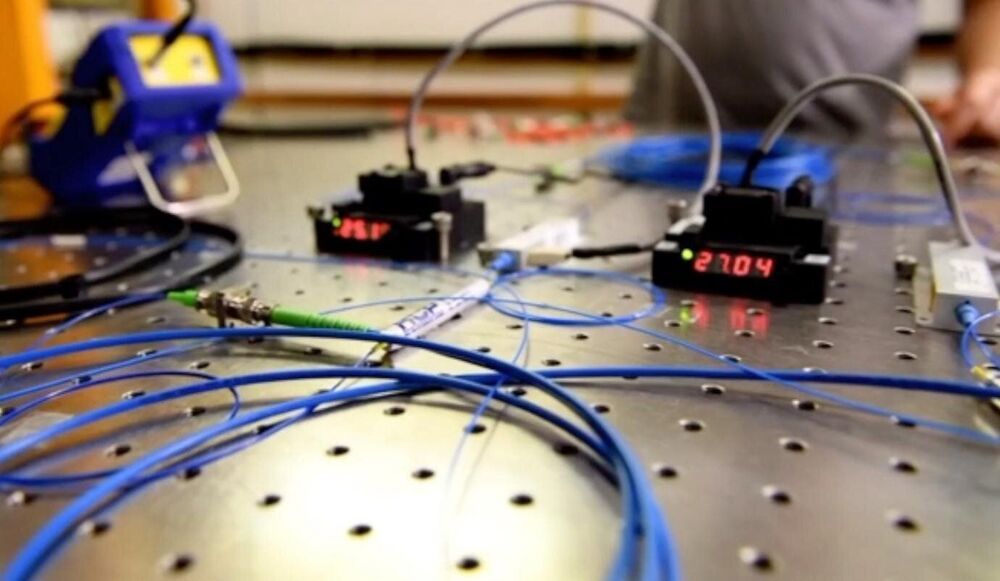Researchers recently resolved a long-standing question in quantum physics, about how long it takes a single atom to tunnel through a barrier.
Category: quantum physics – Page 762
Quantum Teleportation Was Just Achieved With 90% Accuracy Over a 44km Distance
Scientists are edging closer to making a super-secure, super-fast quantum internet possible: they’ve now been able to ‘teleport’ high-fidelity quantum information over a total distance of 44 kilometres (27 miles).
Both data fidelity and transfer distance are crucial when it comes to building a real, working quantum internet, and making progress in either of these areas is cause for celebration for those building our next-generation communications network.
In this case the team achieved a greater than 90 percent fidelity (data accuracy) level with its quantum information, as well as sending it across extensive fibre optic networks similar to those that form the backbone of our existing internet.

The unhackable computers that could revolutionize the future
While many institutions are developing quantum computers, making a quantum internet requires a way to transfer the information between computers. This is accomplished by a phenomenon called quantum teleportation, in which two atoms separated by large distances are made to act as if they are identical.
Don Lincoln writes about recent research that has brought us closer to actualizing the goal of a quantum internet, giving us both hope and fear about what it could mean for the future.

Stretching diamond for next-generation microelectronics
Diamond is the hardest material in nature. But out of many expectations, it also has great potential as an excellent electronic material. A joint research team led by City University of Hong Kong (CityU) has demonstrated for the first time the large, uniform tensile elastic straining of microfabricated diamond arrays through the nanomechanical approach. Their findings have shown the potential of strained diamonds as prime candidates for advanced functional devices in microelectronics, photonics, and quantum information technologies.
The research was co-led by Dr. Lu Yang, Associate Professor in the Department of Mechanical Engineering (MNE) at CityU and researchers from Massachusetts Institute of Technology (MIT) and Harbin Institute of Technology (HIT). Their findings have been recently published in the prestigious scientific journal Science, titled “Achieving large uniform tensile elasticity in microfabricated diamond”.
“This is the first time showing the extremely large, uniform elasticity of diamond by tensile experiments. Our findings demonstrate the possibility of developing electronic devices through ‘deep elastic strain engineering’ of microfabricated diamond structures,” said Dr. Lu.


Important milestone in the creation of a quantum computer
Quantum computer: One of the obstacles for progress in the quest for a working quantum computer has been that the working devices that go into a quantum computer and perform the actual calculations, the qubits, have hitherto been made by universities and in small numbers. But in recent years, a pan-European collaboration, in partnership with French microelectronics leader CEA-Leti, has been exploring everyday transistors—that are present in billions in all our mobile phones—for their use as qubits. The French company Leti makes giant wafers full of devices, and, after measuring, researchers at the Niels Bohr Institute, University of Copenhagen, have found these industrially produced devices to be suitable as a qubit platform capable of moving to the second dimension, a significant step for a working quantum computer. The result is now published in Nature Communications.
Quantum dots in two dimensional array is a leap ahead
One of the key features of the devices is the two-dimensional array of quantum dots. Or more precisely, a two by two lattice of quantum dots. “What we have shown is that we can realize single electron control in every single one of these quantum dots. This is very important for the development of a qubit, because one of the possible ways of making qubits is to use the spin of a single electron. So reaching this goal of controlling the single electrons and doing it in a 2-D array of quantum dots was very important for us”, says Fabio Ansaloni, former Ph.D. student, now postdoc at center for Quantum Devices, NBI.

New quantum nanodevice can simultaneously act as a heat engine and a refrigerator
A multitasking nanomachine that can act as a heat engine and a refrigerator at the same time has been created by RIKEN engineers. The device is one of the first to test how quantum effects, which govern the behavior of particles on the smallest scale, might one day be exploited to enhance the performance of nanotechnologies.
Conventional heat engines and refrigerators work by connecting two pools of fluid. Compressing one pool causes its fluid to heat up, while rapidly expanding the other pool cools its fluid. If these operations are done in a periodic cycle, the pools will exchange energy and the system can be used as either a heat engine or a fridge.
It would be impossible to set up a macroscale machine that does both tasks simultaneously—nor would engineers want to, says Keiji Ono of the RIKEN Advanced Device Laboratory. “Combining a traditional heat engine with a refrigerator would make it a completely useless machine,” he says. “It wouldn’t know what to do.”

Researchers achieve sustained, high-fidelity quantum teleportation
A viable quantum internet—a network in which information stored in qubits is shared over long distances through entanglement—would transform the fields of data storage, precision sensing and computing, ushering in a new era of communication.
This month, scientists at Fermi National Accelerator Laboratory—a U.S. Department of Energy national laboratory affiliated with the University of Chicago—along with partners at five institutions took a significant step in the direction of realizing a quantum internet.
In a paper published in PRX Quantum, the team presents for the first time a demonstration of a sustained, long-distance teleportation of qubits made of photons (particles of light) with fidelity greater than 90%.
Repulsive gravity as an alternative to dark energy (Part 2: In the quantum vacuum)
Circa 2012
(PhysOrg.com) — During the past few years, CERN physicist Dragan Hajdukovic has been investigating what he thinks may be a widely overlooked part of the cosmos: the quantum vacuum. He suggests that the quantum vacuum has a gravitational charge stemming from the gravitational repulsion of virtual particles and antiparticles. Previously, he has theoretically shown that this repulsive gravity can explain several observations, including effects usually attributed to dark matter. Additionally, this additional gravity suggests that we live in a cyclic Universe (with no Big Bang) and may provide insight into the nature of black holes and an estimate of the neutrino mass. In his most recent paper, published in Astrophysics and Space Science, he shows that the quantum vacuum could explain one more observation: the Universe’s accelerating expansion, without the need for dark energy.
“The quantum vacuum was predicted theoretically more than 60 years ago,” Hajdukovic told PhysOrg.com. “Today, there is significant experimental evidence that the quantum vacuum exists. I have decided to combine one reality (the quantum vacuum) with one hypothesis (the negative gravitational charge of antiparticles) and to study the consequences. The hypothesis of the gravitational repulsion between matter and antimatter is older than half a century, but before me no one has used it in the combination with the quantum vacuum. … The results are surprising; there is potential to explain [the Universe’s accelerating expansion] in the framework of the quantum vacuum enriched with the gravitational repulsion between matter and antimatter.”
According to Hajdukovic, gravity in the quantum vacuum arises from the gravitational repulsion between the positive gravitational charge of matter and the (hypothetical) negative gravitational charge of antimatter. While matter and antimatter are gravitationally self-attractive, they are mutually repulsive. (This part is similar to Massimo Villata’s theory from part 1, in which negatively charged antimatter exists in voids rather than in the quantum vacuum.) Although the quantum vacuum does not contain real matter and antimatter, short-lived virtual particles and virtual antiparticles could momentarily appear and form pairs, becoming gravitational dipoles.

Tiny Quantum Computer Solves Real Logistics Optimization Problem
Researchers at Chalmers University of Technology, Sweden, have now shown that they can solve a small part of a real logistics problem with their small, but well-functioning quantum computer.
Quantum computers have already managed to surpass ordinary computers in solving certain tasks – unfortunately, totally useless ones. The next milestone is to get them to do useful things. Researchers at Chalmers University of Technology, Sweden, have now shown that they can solve a small part of a real logistics problem with their small, but well-functioning quantum computer.